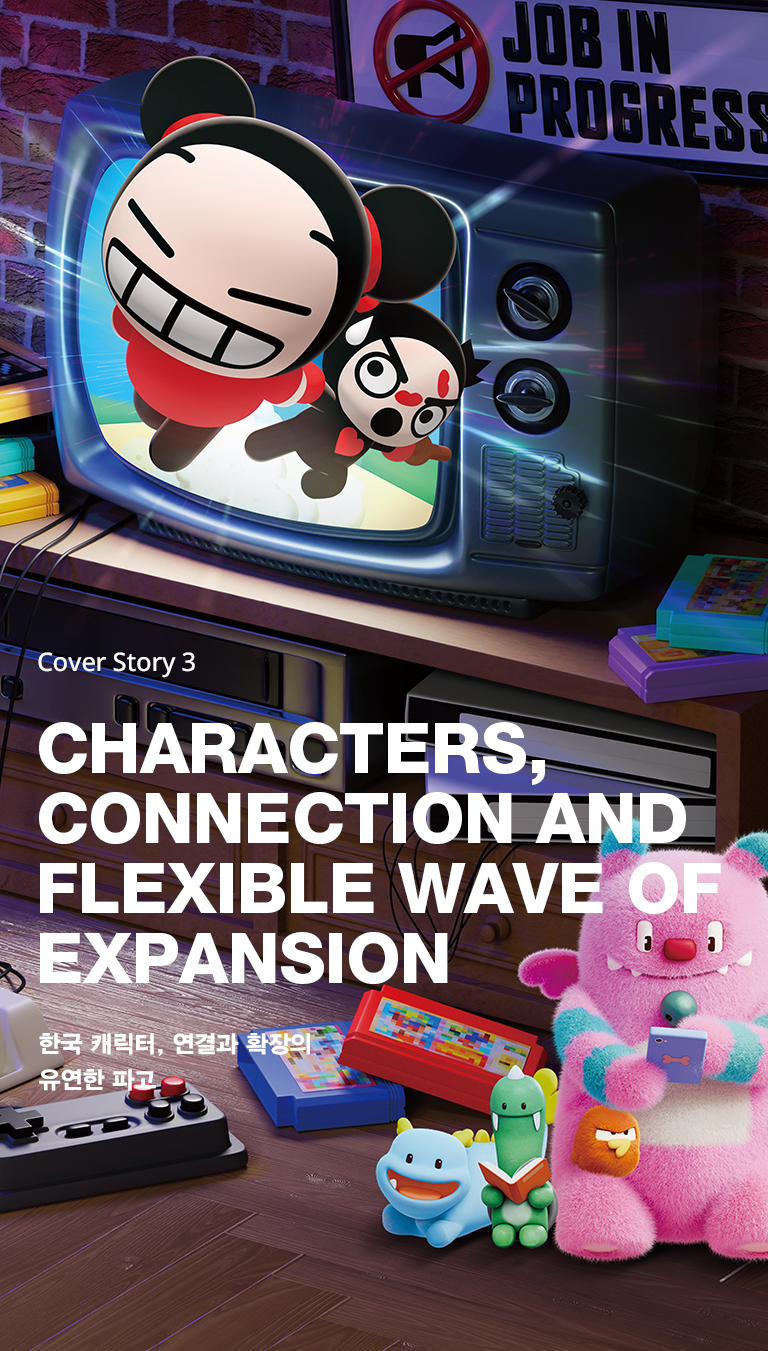
Korean characters didn’t just enter daily life—they energized it. Their success stems from compelling worldbuilding, genuine emotional connections, tech adoption and smart global marketing. Now, after conquering their home market, they face an exciting challenge: resonating with global audiences while retaining the unique charm that made them beloved.
한국 캐릭터가 한국인의 일상을 물들일 수 있었던 이유는 세계관, 유대감, 기술 개방성과 세계화 전략을 갖추었기 때문이다. 이를 기반으로 성장한 한국 캐릭터는, 세계인의 삶에 녹아들기 위해 새로운 과제를 안고 나아가려 한다.
Writer. Park Ki Soo
My laptop is covered with stickers: the Choigosim character bearing the phrase “Dad is the best,” RUI BAO and HUI BAO characters from my favorite baseball team’s collaboration, Hanyang University’s Hanyangie character and LINE FRIENDS’ BROWN. But that’s just the beginning. Countless characters dangle as keychains from students’ bags, while emoji-style characters fill our digital conversations. Our daily lives are intertwined with characters—and fascinatingly, they’re all Korean.
The Korean character industry began to develop on an industrial scale in the early 2000s with the introduction of characters such as Dooly the Little Dinosaur, Mashimaro, PUCCA, Zolaman and Pororo the Little Penguin. In the 2010s, it expanded dramatically with KAKAO FRIENDS and LINE FRIENDS moving beyond merchandise into games, theme parks and more. Since 2020, characters like Zanmang Loopy and Brown and Friends have captured Gen Z and Millennial tastes, creating synergy through strategic collaborations across various sectors, including beauty, fashion, food, travel, edutech, health, gaming and the metaverse. In today’s experience economy and emotional consumption trends, characters serve as key mechanisms for forming emotional connections with brands—suggesting possibilities far beyond simple collaborations. Looking ahead, Korean characters are expected to explore more partnerships in AI-based virtual characters, wearable characters and ESG initiatives.
 1. Dooly the Little Dinosaur debuted as a comic in the 1980s and later adapted into TV animation and films. / © doolynara.
1. Dooly the Little Dinosaur debuted as a comic in the 1980s and later adapted into TV animation and films. / © doolynara.
2. Pucca was created in the 1990s and rose to fame in the 2000s. / © VOOZ.
3. Mashimaro, the rabbit character, debuted in Korea in 2000 and quickly became a sensation. It ranked first in a character popularity survey conducted by the Korean government. / © mashimaro, kim jae in.
4. Pororo the Little Penguin was launched in the 2000s and remains beloved today. / © ICONIX CO., LTD.
5. KAKAO FRIENDS were introduced in the 2010s and have become a cultural icon across Korea. / © Kakao Corp.
As of 2023, the Korean content industry was valued at KRW 151 trillion (approximately USD 113 billion), with the character industry estimated at KRW 16 trillion (USD 12 billion)—representing 10.6% and showing consistent growth. This data is from a report published by the Korea Creative Content Agency. Such growth stems from Korean characters’ dynamism within the CPND (Content, Platform, Network, Device) ecosystem, based on originality, connectivity and expandability. There are several key characteristics of Korean characters.
First, they employ content-linked expansion strategies, creating story worlds based on comprehensive universes rather than developing single characters. For example, Kakao Friends builds its story world through character episodes on KakaoTalk, webtoons, merchandise, pop-up stores and KAKAO FRIENDS shops. Similarly, Pinkfong and Baby Shark secure recognition through repetitive YouTube content with songs and dances, building their story world through animation, merchandise and brand collaborations.
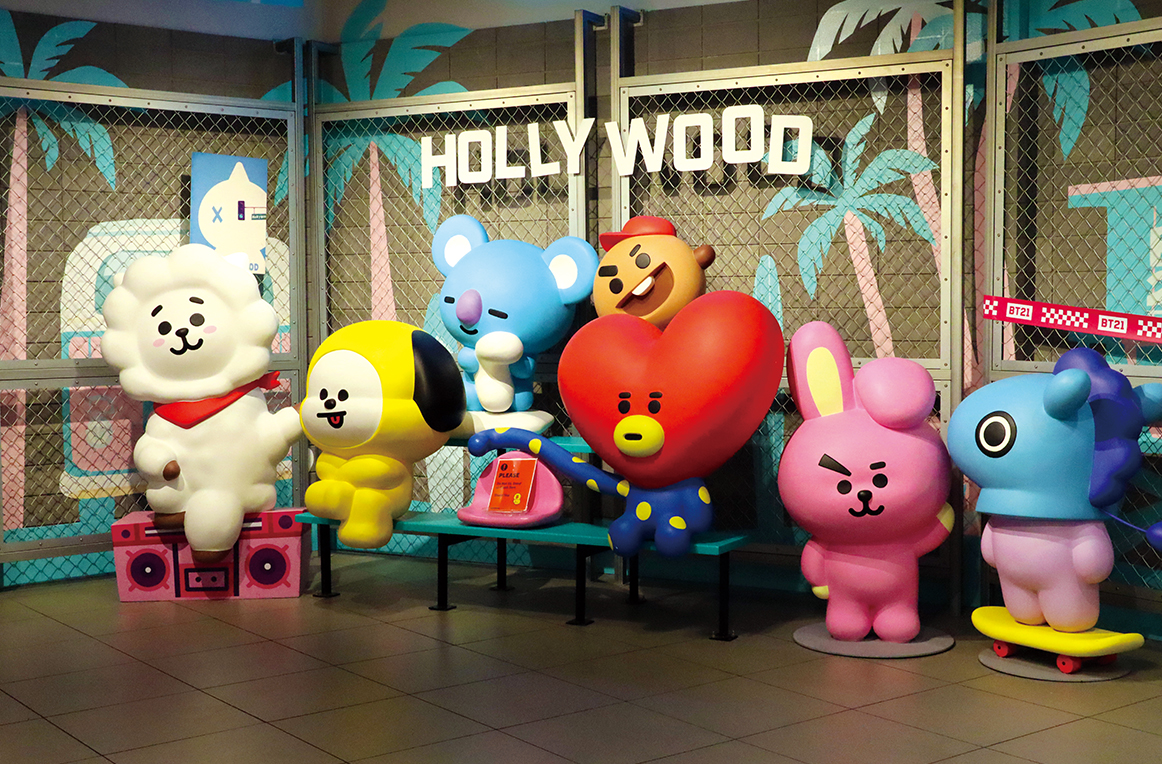 The BT21 flagship store in Hollywood, Los Angeles showcases BTS’s signature characters. / © Shutterstock.
The BT21 flagship store in Hollywood, Los Angeles showcases BTS’s signature characters. / © Shutterstock.
Second, Korean characters emphasize emotionally familiar elements that expand possibilities for empathy with users, securing their distinctiveness. Merely being cute or pretty is no longer enough—characters must form emotional bonds and empathetic connections to establish a reliable rapport. This explains the popularity of characters that emphasize expressionlessness, cuteness and imperfect personalities to strengthen emotional intimacy with younger generations, or “harmless” characters like Choigosim that offer comfort and encouragement through Instagram. Free distribution of wallpapers and templates increases accessibility, allowing users to naturally participate in character story worlds and create opportunities for emotional exchange and empathy.
Third, Korean characters actively adapt to changing media environments and openly embrace new technologies. By utilizing media like webtoons and short-form animations, and platforms like KAKAOTALK and YouTube, they enable continuous enjoyment while securing recognition and familiarity for emotional resonance. This trend is evident in animation-based characters like Pororo the Little Penguin, Tayo the Little Bus and Pinkfong; webtoon IP-based characters like Maru from “Maru is a Puppy” and Chunbae from “Meow Man”; and platform-promoted characters like YouTube-based Baby Shark and Instagram-based Choigosim and MUZIKTIGER. The ability to effectively understand user demands through digital platforms represents another major competitive advantage.
Fourth, Korean characters are pursuing globalization strategies linked to Hallyu (Korean Wave) content. They actively seek strategic combinations with K-pop, dramas, webtoons and games to effectively utilize fandom-driven strategies. Prime examples include LINE FRIENDS’ collaboration with BTS to create BT21, as well as partnerships with BLACKPINK and NJZ. They also implement various collaboration and globalization strategies that leverage existing character fandoms and the “funsumer” (fun+ consumer) trend that prioritizes enjoyment and emotion.
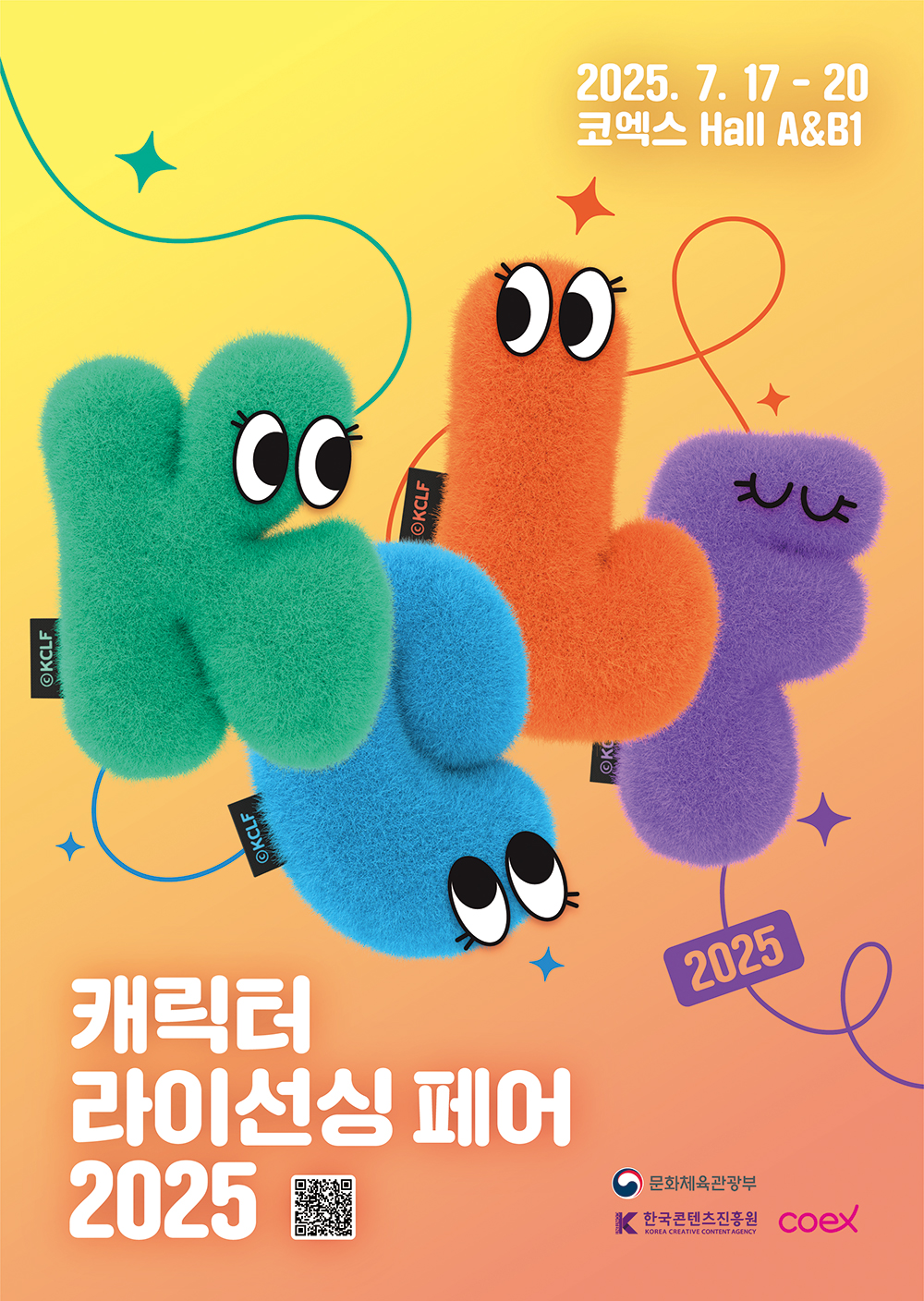 The Korea Character Licensing Fair at COEX is hosted annually by the Korea Creative Content Agency from Jul. 17 to 20. / © Korea Creative Content Agency, COEX.
The Korea Character Licensing Fair at COEX is hosted annually by the Korea Creative Content Agency from Jul. 17 to 20. / © Korea Creative Content Agency, COEX.
Despite these strengths, concerns remain: lack of character diversity makes differentiation difficult; localization strategies essential for globalization remain underdeveloped; creator numbers are limited; the industry ecosystem lacks a solid foundation; and organic cooperation with other sustainable content has been slow.
Nevertheless, there are reasons for optimism: Korean characters have built unique emotion-centered auras, actively explore transmedia strategies (as seen in web novels and webtoons), attempt fan participation and experience-centered world-building, maintain preemptive positioning for collaboration with Hallyu content, and openly pursue diversity and flexibility—all supporting accelerated development of the Korean character industry. The world colored by Korean characters shows tremendous promise.
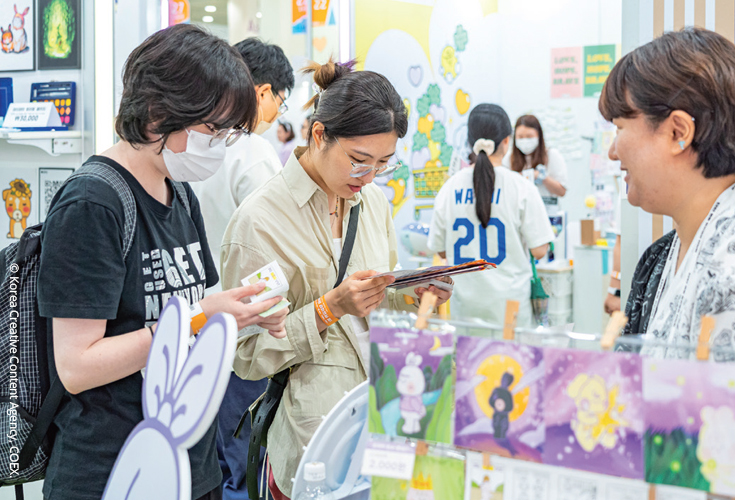 On-site at the Rookie Project—the program to discover young creative talents—of the Korea 2023 Character
On-site at the Rookie Project—the program to discover young creative talents—of the Korea 2023 Character 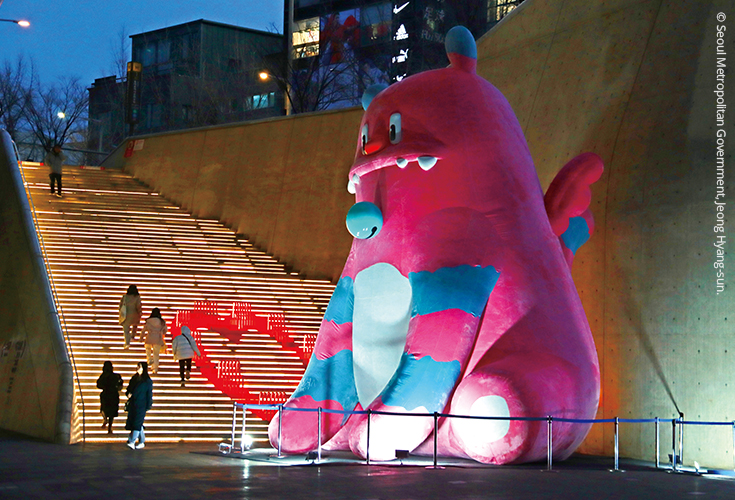 Seoul’s mascot Haechi stands in front of Dongdaemun Design Plaza.
Seoul’s mascot Haechi stands in front of Dongdaemun Design Plaza. Writer. Park Ki Soo
Head of the Department of Culture Contents at Hanyang University and Director of the Cultural Content Research Institute. His research focuses on cultural content storytelling, literacy and fandom studies. He is working to establish practice-oriented academic approaches with strong field applicability.